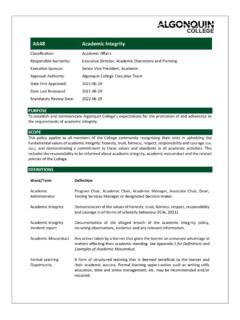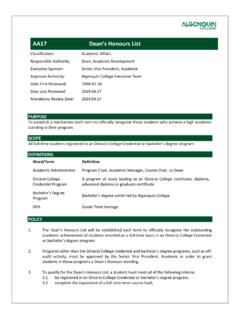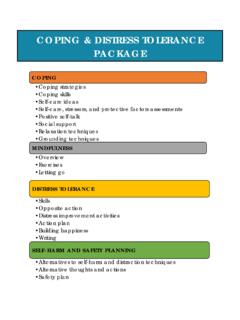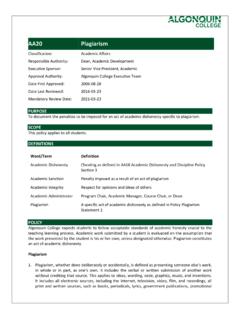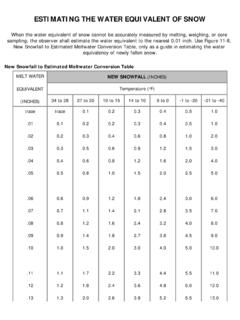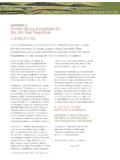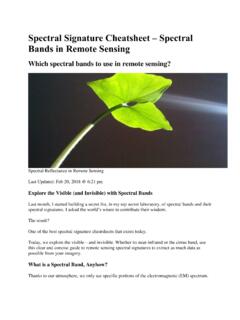Transcription of SAMPLE QUESTIONS: BASIC MATH AND ENGLISH LANGUAGE …
1 SAMPLE QUESTIONS: BASIC MATH AND ENGLISH LANGUAGE SKILLS ASSESSMENT (BMSA+ELSA) The BASIC Math and ENGLISH LANGUAGE Skills Assessment (BMSA+ELSA) consists of three tests: The Accuplacer Arithmetic placement test The Accuplacer Reading Comprehension placement test The Accuplacer Sentence Skills placement test ACCUPLACER ARITHMETIC TEST This test measures how well you perform BASIC arithmetic operations and solve problems that involve fundamental concepts of arithmetic. There are 17 questions on the Arithmetic test. They are divided into three types. 1. Operations with whole numbers and fractions: Topics in this category are addition, subtraction, multiplication, division, recognizing equivalent fractions and mixed numbers, and estimating. 2. Operations with decimals and percents: Topics covered here are addition, subtraction, multiplication, and division with decimals.
2 Also included are percent problems, recognition of decimals, fraction and percent equivalencies, and problems involving estimation. 3. Applications and problem solving: Topics include rate, percent, and measurement problems; simple geometry problems; and distribution of a quantity into its fractional parts. About calculators: During the actual assessment, you will not be permitted to use hand-held calculators to complete the Arithmetic test. During the assessment, a pop-up calculator is made available by Accuplacer for some questions. Scrap paper will be available for to complete the calculations necessary to complete the remaining questions. Exceptions will be made only if noted in an assessment accommodation document prepared for you by the Algonquin College Centre for Students with Disabilities. SAMPLE QUESTIONS Solve the following problems and select your answer from the choices given.
3 1. + .003 + .158 = A. B. C. D. 2. = A. B. C. D. 3. 7/20 = A. B. C. D. 4. Which of the following is the least? A. B. C. D. 5. All of the following are ways to write 25 percent of N EXCEPT A. N B. 25N / 100 C. N D. 25 N 6. Which of the following is closest to A. 280 B. 300 C. 2,800 D. 3,000 7. A soccer team played 160 games and won 65 percent of them. How many games did it win? A. 94 B. 104 C. 114 D. 124 8. Three people who work full-time are to work together on a project, but their total time on the project is to be equivalent to that of only one person working full-time. If one of the people is budgeted for one-half of his time to the project and a second person for one-third of her time, what part of the third worker s time should be budgeted to this project?
4 A. B. C. D. 9. 32 is 40 percent of what number? A. B. 128 C. 80 D. 800 10. 313 225 = A. 112 B. 115 C. 88 D. 1115 ARITHMETIC ANSWER KEY 1. B 2. A 3. C 4. C 5. D 6. A 7. B 8. C 9. C 10. C 2007 The College Board. All rights reserved. College Board, ACCUPLACER, WritePlacer, and the acorn logo are registered trademarks of the College Board. connect to college success is a trademark owned by the College Board. All other products and services may be trademarks of their respective owners. Visit the College Board on the Web: ACCUPLACER READING COMPREHENSION TEST The 20 questions in this test are of two main types: 1. Read a Passage: You will receive a written passage followed by a question based on the passage. Both short and long passages are provided. You may be asked to classify the reading passage according to the kind of information processing required for example, explicit statements related to the main idea, those related to a secondary idea, their application, and inference.
5 2. Sentence relationships: You will receive two sentences followed by a question about the relationship between them. For example, you may be asked if the statement in the second sentence supports the statement in the first, if it contradicts it, or if it repeats the same information. SAMPLE QUESTIONS Directions for Questions 1 to 6: Read the statement or passage and then choose the best answer to the question. Answer the question based on what is stated or implied in the statement or passage. 1. In the words of Thomas DeQuincey, It is notorious that the memory strengthens as you lay burdens upon it. If, like most people, you have trouble recalling the names of those you have just met, try this: The next time you are introduced, plan to remember the names. Say to yourself, I ll listen carefully; I ll repeat each person s name to be sure I ve got it, and I will remember.
6 You ll discover how effective this technique is and probably recall those names for the rest of your life. The main idea of the paragraph maintains that the memory A. always operates at peak efficiency. B. breaks down under great strain. C. improves if it is used often. D. becomes unreliable if it tires. 2. Unemployment was the overriding fact of life when Franklin D. Roosevelt became president of the United States on March 4, 1933. An anomaly of the time was that the government did not systematically collect statistics of joblessness; actually it did not start doing so until 1940. The Bureau of Labor Statistics later estimated that 12,830,000 persons were out of work in 1933, about one-fourth of a civilian labor force of more than 51 million. Roosevelt signed the Federal Emergency Relief Act on May 12, 1933.
7 The president selected Harry L. Hopkins, who headed the New York relief program, to run FERA. A gifted administrator, Hopkins quickly put the program into high gear. He gathered a small staff in Washington and brought the state relief organizations into the FERA system. While the agency tried to provide all the necessities, food came first. City dwellers usually got an allowance for fuel, and rent for one month was provided in case of eviction. This passage is primarily about A. unemployment in the 1930s. B. the effect of unemployment on United States families. C. President Franklin D. Roosevelt s presidency. D. President Roosevelt s FERA program. 3. It is said that a smile is universally understood. And nothing triggers a smile more universally than a taste of sugar. Nearly everyone loves sugar. Infant studies indicate that humans are born with an innate love of sweets.
8 Based on statistics, a lot of people in Great Britain must be smiling because on average, every man, woman, and child in that country consumes 95 pounds of sugar each year. From this passage it seems safe to conclude that the ENGLISH A. do not know that too much sugar is unhealthy. B. eat desserts at every meal. C. are fonder of sweets than most people. D. have more cavities than any other people. 4. With varying success, many women around the world today struggle for equal rights. Historically, women have achieved greater equality with men during periods of social adversity. The following factors initiated the greatest number of improvements for women: violent revolution, world war, and the rigors of pioneering in an undeveloped land. In all three cases, the essential element that improved the status of women was a shortage of men, which required women to perform many of society s vital tasks.
9 We can conclude from the information in this passage that A. women today are highly successful in winning equal rights. B. only pioneer women have been considered equal to men. C. historically, women have only achieved equality through force. D. historically, the principle of equality alone has not been enough to secure women equal rights. 5. In 1848, Charles Burton of New York City made the first baby carriage, but people strongly objected to the vehicles because they said the carriage operators hit too many pedestrians. Still convinced that he had a good idea, Burton opened a factory in England. He obtained orders for the baby carriages from Queen Isabella II of Spain, Queen Victoria of England, and the Pasha of Egypt. The United States had to wait another 10 years before it got a carriage factory, and only 75 carriages were sold in the first year.
10 Even after the success of baby carriages in England, A. Charles Burton was a poor man. B. Americans were still reluctant to buy baby carriages. C. Americans purchased thousands of baby carriages. D. the United States bought more carriages than any other country. 6. All water molecules form six-sided structures as they freeze and become snow crystals. The shape of the crystal is determined by temperature, vapor, and wind conditions in the upper atmosphere. Snow crystals are always symmetrical because these conditions affect all six sides simultaneously. The purpose of the passage is to present A. a personal observation. B. a solution to a problem. C. actual information. D. opposing scientific theories. Directions for questions 7 10: For the questions that follow, two underlined sentences are followed by a question or statement.

